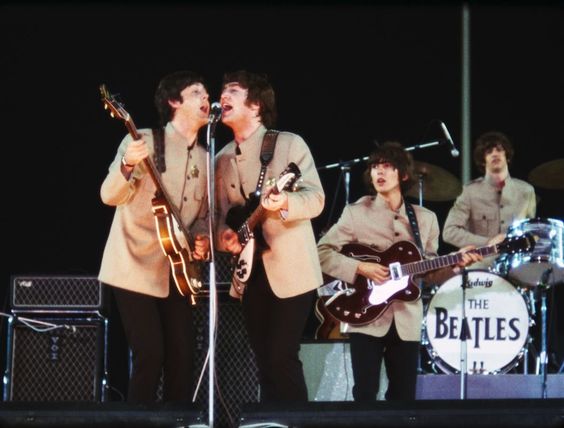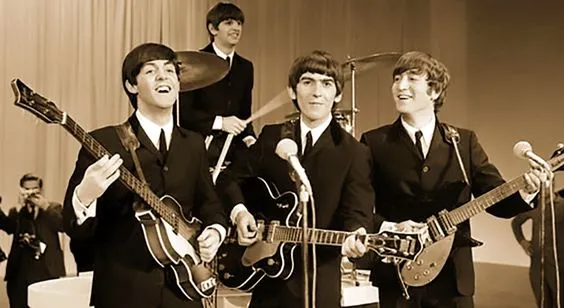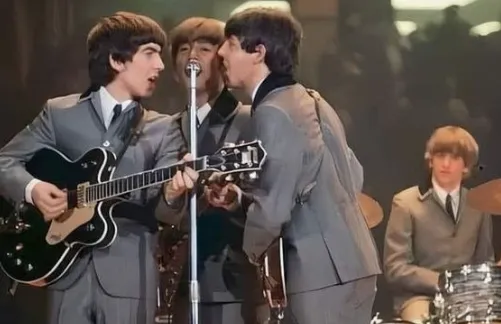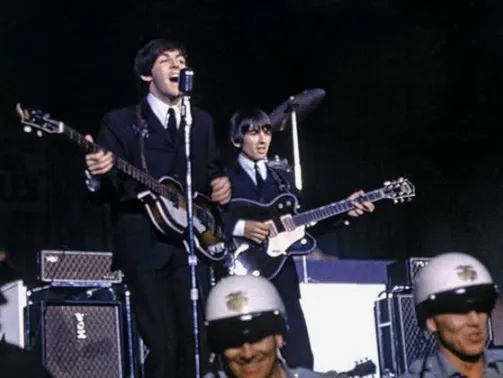About the song
(Watch the video below)
"I Am the Walrus," a psychedelic masterpiece penned by John Lennon and released as a part of The Beatles' Magical Mystery Tour album in 1967, stands as a testament to the band's unparalleled creativity and willingness to push the boundaries of popular music. With its surreal lyrics, avant-garde production, and eclectic instrumentation, the song remains a captivating enigma, inviting listeners on a mesmerizing journey through the depths of the imagination.
From the moment the song begins, with its haunting orchestral swell and cryptic spoken-word introduction, listeners are transported to a world of kaleidoscopic imagery and enigmatic symbolism. Lennon's enigmatic lyrics, filled with nonsensical phrases and obscure references, defy conventional interpretation, inviting listeners to unravel the mysteries hidden within their layers.

At its core, "I Am the Walrus" is a celebration of the power of the imagination and the liberating force of creativity. Through its surreal imagery and abstract wordplay, the song encourages listeners to embrace the absurd and explore the boundless possibilities of the mind. Lines like "Yellow matter custard dripping from a dead dog's eye" and "Element'ry penguin singing Hare Krishna" are as confounding as they are mesmerizing, inviting listeners to interpret them as they see fit.
Musically, "I Am the Walrus" is equally unconventional, with its cacophony of sounds and textures creating a mesmerizing sonic landscape that defies categorization. From the swirling strings and eerie Mellotron to the distorted guitars and hypnotic rhythms, the song is a sonic collage of disparate elements, woven together with meticulous precision. Producer George Martin's innovative production techniques, including the use of tape loops and sound effects, add an extra layer of depth and complexity to the song, creating a richly immersive listening experience.
One of the song's most memorable features is Lennon's mesmerizing vocal delivery, which ranges from haunting whispers to impassioned wails, reflecting the shifting emotions and surreal imagery of the lyrics. His distinctive voice, coupled with the song's avant-garde instrumentation, creates a sense of otherworldly beauty that is as captivating as it is unsettling.
Lyrically, "I Am the Walrus" is a labyrinth of enigmatic imagery and cryptic symbolism, drawing inspiration from sources as diverse as Lewis Carroll's "Through the Looking-Glass" and James Joyce's "Ulysses." Lennon's stream-of-consciousness approach to songwriting imbues the lyrics with a sense of spontaneity and improvisation, as if they were plucked from the depths of his subconscious mind.

Moreover, "I Am the Walrus" serves as a testament to The Beatles' willingness to embrace experimentation and innovation in their music. At a time when most bands were content to stick to conventional song structures and lyrical themes, The Beatles pushed the boundaries of popular music with their groundbreaking approach to composition and production. "I Am the Walrus" stands as a shining example of their adventurous spirit and willingness to challenge the status quo, inspiring generations of musicians to follow in their footsteps.
In many ways, "I Am the Walrus" is a microcosm of the cultural and artistic revolution that defined the 1960s. With its surreal imagery, avant-garde production, and defiantly nonconformist attitude, the song encapsulates the spirit of a generation that was eager to break free from the constraints of tradition and embrace the limitless possibilities of the imagination.
As we continue to revisit The Beatles' legendary discography, songs like "I Am the Walrus" serve as a reminder of the band's enduring legacy and their ability to transcend the confines of time and genre with their innovative approach to music and songwriting. With its mesmerizing blend of surreal imagery, avant-garde production, and enigmatic symbolism, "I Am the Walrus" remains a timeless masterpiece that continues to captivate and intrigue listeners more than half a century after its release.



